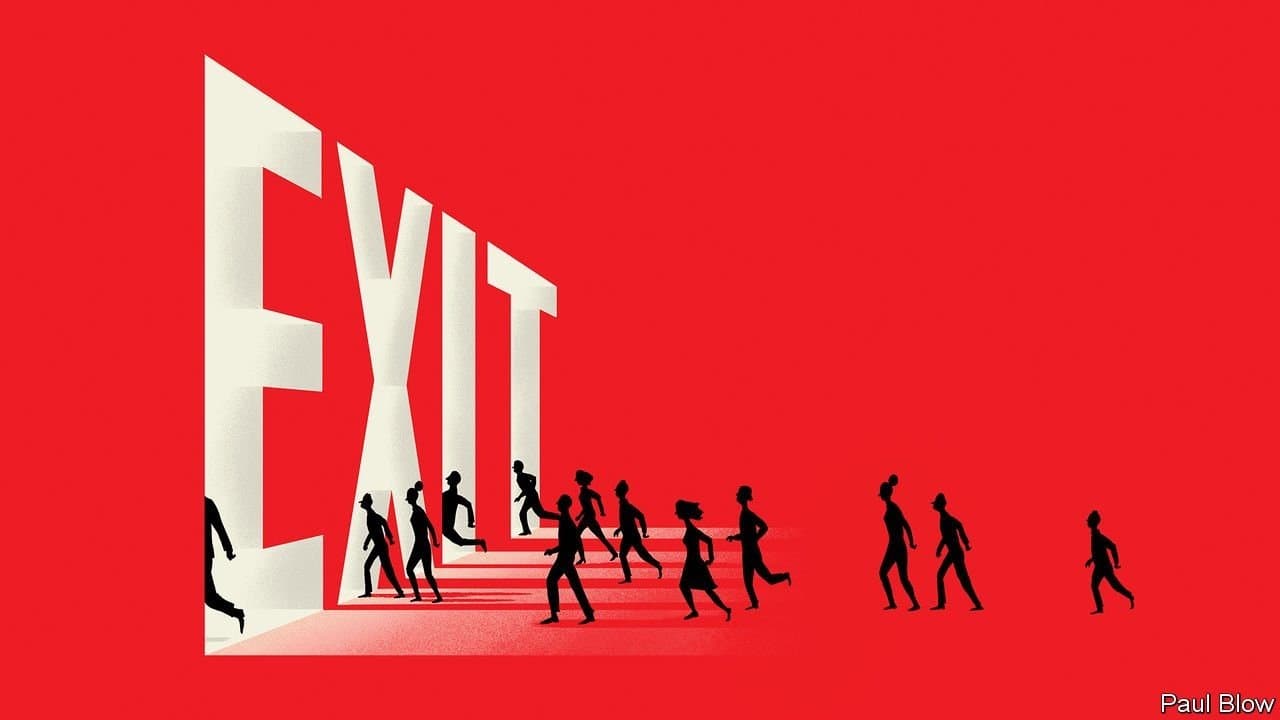The “Great Resignation”, “Turnover Tsunami”, or “Quit-ageddon” … whatever you call the current phenomenon of workers leaving their jobs in droves, it is happening.
“In April, the number of workers who quit their job in a single month broke an all-time U.S. record. Economists called it the “Great Resignation.” But America’s quittin’ spirit was just getting started,” Derek Thompson wrote in The Atlantic is October 2021. “In July, even more people left their jobs. In August, quitters set yet another record. That Great Resignation? It just keeps getting greater.”
Ready or not, businesses need to prepare and be ready to act in this historically tight labor market – and if they play their cards right, they could even take advantage of this “Great Resignation”.
“In what is shaping up to be one of the most significant labor movements of the 21st century, employees are coming to realize that the balance of power in the job market is beginning to tilt in their favor,” wrote Nick Shah, founder and president of Peterson Technology Partners.
Signs of the Times: “We All Quit”
Shah in his article posted on LinkedIn points out the “We All Quit” signs cropping up at establishments across the country where lower-paid employees have quit in groups, sometimes shuttering locations overnight.
Thompson cites Bureau of Labor Statistics “quits” numbers that showed in August 2021, a mind-boggling 1 in every 14 employees in accommodations and food services quit their jobs.
“For those in leisure and hospitality, especially, the workplace must feel like one giant revolving door,” wrote Thompson. “Thanks to several pandemic-relief checks, a rent moratorium, and student-loan forgiveness, everybody, particularly if they are young and have a low income, has more freedom to quit jobs they hate and hop to something else.”
Shah says the “Great Resignation” is not limited to those flipping burgers and cleaning hotel rooms with white-collar workers also switching jobs in record numbers.
“Polls indicate that nearly 40 percent of white-collar employees say that they would rather change their jobs than stop working remotely. Even highly sought-after employers like Apple are facing the prospect of resignations and labor shortages causing some panic and hasty policy changes,” wrote Shah. “Software engineers, especially in DevOps and cloud computing related roles, are choosing to turn freelance, offering their services from the comfort of their homes.”
Great Resignation: Turning Lemons into Lemonade
It is easy to run a business when everything goes your way, but how you react in the face of adversity is often the best bellwether for your long-term success.
When it comes to the “Great Resignation”, can you take this labor squeeze and turn lemons into lemonade?
Shah certainly thinks so: “I think this oncoming labor crisis can be the catalyst by which you can take stock of your relationship with your employees and introduce some essential reorganization to your corporate structure. It is a chance to acquire upskill for your organization, augment teams with new talent, and refresh your company culture with new perspectives and ideas. It can also be a good time for you to take stock of your organization, spot flaws, fix cracks, and promote from within.”
For starters, the “Great Resignation” can be a two-way street for your business, as employees leaving are looking for better opportunities and you can position your company as a landing spot for top talent looking for a change.
Shah says this is a great time to add new skills and talent to your organization, while also identifying those within your organization that may be better off leaving.
“The Great Resignation can be an opportunity to restart and recruit the type of employees you want working at your organization, who are seeking new challenges and have the potential to succeed on your team,” writes Shah.
Thompson calls it a “Great Reshuffling” as people and businesses around the country rearrange. He argues that America will be better off for this sea change.
“Several years ago, I wrote that America had lost its “mojo,” because its citizens were less likely to switch jobs, move to another state, or create new companies than they were 30 (or 100) years ago,” Thompson writes. “Well, so much for all that. America’s mojo is back, baby (yeah), and it may lead to a better-job revolution that outlasts the temporary measures, such as unemployment super-benefits and rent protection, that have nourished it.”
Shah says to look at your current hiring strategies and plans:
- Examine Your Operation Model: Collaborate with current employees on a business model, including the possibility of hybrid and remote work, that can help with retention and future recruitment.
- Resignations as a Stress Test: High-performing employees exiting can expose cracks within your organization. Take a close look at employees leaving the roles they handled. Make sure a structure is in place to maintain continuity when key personnel decide to quit.
- Hire from Within: Sometimes the best hires to replace those quitting can come from within other areas of your company. Promoting from within can create a company culture that can help with your employee retention.
“Keep an eye on the silver lining and use this as an opportunity to learn and grow,” says Shah.
PEO Partnerships Offer Recruitment Flexibility
Many small and medium-sized businesses partner with professional employer organizations (PEOs) to help provide HR services from paying wages and taxes to providing compliance assistance to providing workers with 401K plans, health, dental, and life insurance.
PEOs also help with employee retention and recruitment, helping their clients employ some 4 million people nationwide, according to the National Association of Professional Employer Organizations (NAPEO).
Employers that do not have a well-formulated plan to combat the “Great Resignation” will find themselves at a competitive disadvantage.
One tactic is to utilize the professional advice and assistance provided by a PEO.
Research from a NAPEO white paper in September 2021 showed that during the COVID-19 pandemic, those businesses using PEOs were more likely to have retained, and even grown employment, compared to others:
- Have had employment grow by 1 percent since early 2020 compared to 6 percent decline for comparable small businesses
- Have a rate of employment growth over the last 6 months that is 81 percent higher
“Specifically, PEO clients suffered a lower rate of job loss (almost 4 percentage points lower) during the first half of 2020 than did other comparable small businesses,” said the report’s authors. “In addition, PEO clients experienced a higher rate of job growth between July 2020 and June 2021, with the largest gains (relative to other small businesses) occurring in the first half of 2021, when employment growth among PEO clients outpaced that of small businesses overall by 2.5 percentage points. Combined, PEO clients and their employees experienced fewer job losses in the first months of the pandemic and larger job gains during the past year of the pandemic.”
PEOs like Employer Flexible can offer your business a dedicated recruitment partner that can help you with hiring needs ranging from:
- Job postings
- First level screenings
- Second level screenings
- Direct hires
- Outsourced recruitment
Contact Employer Flexible today to find out how we can provide your business with the insight, guidance, and flexibility to succeed during the “Great Resignation”.






